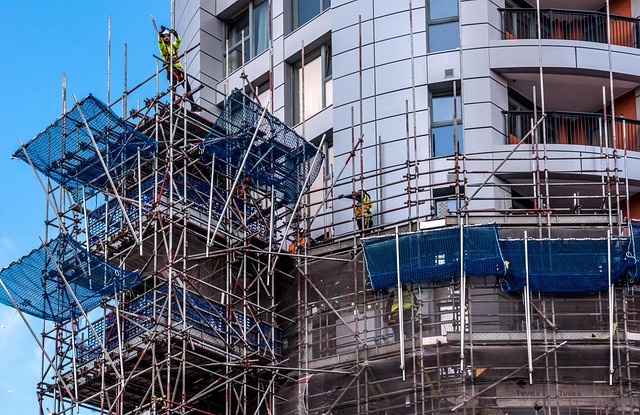Managing Environmental Toxins in Property Development
Property development, whether involving new construction or the refurbishment of existing structures, often encounters various environmental considerations. Among these, the presence of hazardous materials like asbestos demands meticulous attention. Understanding the origins, risks, and regulatory requirements associated with such toxins is crucial for ensuring worker safety, public health, and environmental protection throughout the lifecycle of a development project. Proper management of these elements is not just a matter of compliance but a fundamental aspect of responsible and sustainable building practices.

Understanding Hazardous Building Materials
Asbestos is a naturally occurring fibrous silicate mineral once widely used in construction due to its heat resistance, tensile strength, and insulating properties. It was commonly incorporated into a variety of building materials, including insulation, roofing, flooring, pipe lagging, and cement products, particularly in structures built before the late 20th century. While highly effective as a building component, asbestos is now recognized as a significant hazardous material. When these materials are disturbed, microscopic asbestos fibers can become airborne, posing a serious contaminant risk to anyone in the vicinity.
Safety Protocols in Demolition and Renovation
Working with older buildings inherently carries the risk of encountering asbestos. During demolition and renovation activities, previously stable asbestos-containing materials (ACMs) can be easily disturbed, leading to the release of toxic fibers into the environment. Establishing stringent safety protocols is paramount to mitigate this risk. These protocols typically involve thorough initial surveys to identify ACMs, developing a comprehensive management plan, and implementing strict containment and personal protective equipment (PPE) measures for all personnel involved. Adherence to these guidelines is critical to prevent exposure during any project affecting a building’s structure.
The Process of Asbestos Remediation and Abatement
When asbestos is identified and determined to pose a risk, remediation and abatement become necessary. This process typically begins with a detailed assessment to determine the type, quantity, and condition of the asbestos. Following assessment, the area is sealed off to prevent the spread of fibers, often involving negative air pressure systems and specialized filtration. Trained and certified professionals then carefully remove the hazardous material using specific techniques to minimize fiber release. The removed material is double-bagged, sealed, and disposed of at approved facilities, followed by a thorough cleanup and air testing to ensure the environment is safe before reoccupation.
Health Risks Associated with Asbestos Fibers
Exposure to airborne asbestos fibers can lead to serious and often fatal health conditions, primarily affecting the lungs and respiratory system. These conditions include asbestosis, lung cancer, and mesothelioma, a rare and aggressive cancer of the lining of the lungs, abdomen, or heart. The latency period for these diseases can be decades, meaning symptoms may not appear until many years after initial exposure. This delayed onset underscores the critical importance of preventing exposure to these toxic fibers through rigorous safety measures and effective abatement strategies.
Regulatory Compliance and Environmental Cleanup for Property
Managing asbestos in property development is heavily regulated by government bodies worldwide, designed to protect workers, the public, and the environment. Compliance involves adhering to specific regulations regarding identification, notification, handling, removal, and disposal of ACMs. Property owners and developers are typically responsible for ensuring that all work involving asbestos is carried out by licensed professionals in accordance with local and national laws. Proper cleanup and documentation are essential not only for legal compliance but also for demonstrating due diligence and protecting the long-term value and safety of the property and its surrounding environment.
Navigating the costs associated with asbestos cleanup is a significant consideration for property developers and owners. The overall expense can vary widely based on several factors, including the type and quantity of asbestos-containing material, its location within the structure, accessibility, the extent of contamination, and local regulatory requirements for disposal. Small, localized removals, such as a section of pipe insulation, will naturally be less costly than extensive remediation involving multiple areas or an entire building during demolition. Specialized equipment, containment procedures, and the need for certified professionals contribute to these costs.
| Product/Service | Provider | Cost Estimation (USD) |
|---|---|---|
| Asbestos Testing & Survey (Residential) | Environmental Consulting Firm | $300 - $800 |
| Small Area Removal (e.g., pipe wrap) | Licensed Asbestos Abatement Contractor | $1,000 - $5,000 |
| Medium Area Removal (e.g., floor tiles) | Licensed Asbestos Abatement Contractor | $5,000 - $15,000 |
| Large Area/Whole House Abatement | Licensed Asbestos Abatement Contractor | $15,000 - $50,000+ |
| Commercial/Industrial Demolition Abatement | Specialized Industrial Contractor | $50,000 - $500,000+ |
Prices, rates, or cost estimates mentioned in this article are based on the latest available information but may change over time. Independent research is advised before making financial decisions.
Effectively managing environmental toxins, particularly asbestos, is an indispensable part of modern property development. It encompasses understanding the material’s properties, implementing rigorous safety protocols during all phases of construction, executing precise remediation and abatement procedures, recognizing the significant health risks involved, and ensuring strict adherence to regulatory compliance. Prioritizing these aspects safeguards human health, protects the environment, and contributes to the creation of safer, more sustainable properties for the future.





